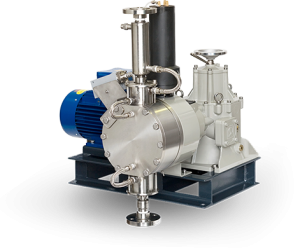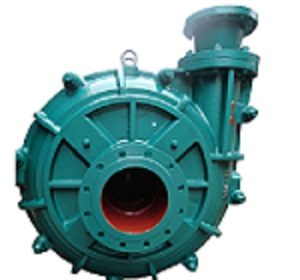What is a die casting mold?

Industrial molds are very diverse. The variety of these molds is due to the large variety of components and industrial parts and the type and quality required for them, and even the type of parts being manufactured or assembled has a great impact on industrial mold making. But with all the differences that exist in industrial molding, industrial molding in general can be summarized in 4 different ways:
- Making special casting molds
- Manufacture of plastic injection molds
- Making forging molds
- Making press molds
One of the most common types of industrial molds can be found in special casting molds, which have a long history and were almost one of the first molds made by humans. Industrial Casting Depending on the type of mold, the type of material and the characteristics of the piece, different casting methods are required. Mostly these methods are characterized by the type of piece and application it has in the industry, as well as the conditions the piece must have, and the customer actually defines it.
However, given the casting method, there are ultimately three types of castings for molding:
- Die casting molds are known as high pressure molds.
- gravity die casting mold or complete mold known as low pressure mold
- Sand molds that known as sand molds too.
What is a die casting molds?

Among different casting molds, die casting is well known, and is widely used in the industry. The use of die casting mold is becoming more and more popular every day and is being used to produce various industrial parts.
Die casting mold is a type of casting mold known as a permanent metal mold and is mounted on a pressure casting machine. This mold is generally used to produce high-pressure casting parts.
The die casting mold is mounted on the special machine and injected into the die by means of a hole intended for the die, and through channels, high pressure molten metal, into the die. Die cast molds consist of two parts, and these two parts are intended to be easily separated from the mold after the melt has been molded into a mold.
The die casts are produced using hot or hot steel or by using high temperature resistant refractory alloys to withstand high grade melt easily and without change.
Die casting is generally used to make copper, aluminum, silver and more. They produce high quality parts because of the precise structure of these molds, as well as the high pressure used to inject these molds. However, some parts may require a polishing process after finishing work.
The die casting mold structure

Industrial die casting is one of the most advanced molds and we are seeing more and more mold being developed every day and more parts and products are made using this mold.
The die casting molds has two pieces or parts. A piece or part, known as a fixed or semi-fixed piece of mold, is located on the injection side of the material and is therefore defined as an injection piece. The second piece of die cast that’s call, moving piece or mold, and is responsible for separating the piece that is produced.
Fixed mold part or fixed piece die cast mold, attached to fix part of die casting machine, and movable part of die cast, also attached to semi-movable part of die casting machine. Keep in mind that die casting is a type of die casting under pressure and is not suitable for all casting machines and should be used for pressure casting machine.
Both fixed and removable die castings mold are fastened to the injection molding machine ready for injection. These molds are stacked or fixed together, and the force of the casting machine seals them tightly. The die separation surface is exactly the contact surface of both halves. This surface needs to be sealed so that the pressure of the device can prevent the liquid from leaking out and prevent the piece from splashing.
Therefore, in order to seal the contact surface or the separation surface, both molds levels must be grinded and leveled, which is completely sealable and impermeable at injection time and under pressure.
A very important point in die casting molding is one of the precision of the mold plates adapting to a perfectly uniform surface at the same time, and the second is the use of metals perfectly suited to the molten type so that heat does not deform the mold, or pressing the device does not cause the mold to deteriorate. In order to accommodate the die casting mold plates, the companies that do the industrial molding work have rounded or roughened about 1 to 2 mm of the outer edge of both ends of the die cast mold surfaces. This ensures that the blows that occur when closing or even opening the mold do not deform the edges and do not compromise precision.
History of die casting molds

It was in the mid-19th century that the United States unveiled the process of making die casts mold. The initial version of the mold, of course, was designed by experts in the country to press non-ferrous molten metal, which was harder than metal, to produce the piece. It was first used to make aluminum parts. With two pieces of metal surface of mold, they would cut between molds whenever the mold was cooled, and thus extract a piece of melt.
Slowly, due to the problems observed, such as hard opening or locking of the die, stamping, die removal after a few pieces, etc., many modifications were made to these molds, and eventually the die-casting mold itself became today.
Currently, die casting is mainly used to make parts that are less molten metal. Like copper, zinc, lead or aluminum. These molds are also used to make parts that have a thickness of between 1.5 and 15 mm and all must be molded by high pressure melt casting machines.
The use of die casting has many advantages in producing components. These include high surface quality, the ability to produce high circulation pieces, reduced waste, lack of laminate, and so on. These molds not only accelerated the production process but also helped the industry in saving time and money.
For example, there is no need for processes such as crushing, grinding, drilling, etc. on a piece that is fully molded, thus increasing the speed of the piece’s production significantly.
Today most die casting molds are manufactured using stainless steel of varying thicknesses and volumes. The type of part and the properties of the part required to produce by these molds largely determine the characteristics of die casting molds. Die cast mold has a very high pressure, high temperature and different melts, so the finished price of die cast mold is high. Although it is worth the cost and will shortly offset the cost of your purchase.
The process of making die casting molds
Generally, the first step to producing die casting mold is the process of mold design that is performed using specialized software. Then two types of machines may be used to make die casting mold.
Either hot-chambered industrial machines are used, which are for low-melting temperature alloys, such as zinc, or cold-chambered industrial machines are used for high-melting temperature alloys, such as aluminum. Manufacturing die casting mold involves several steps. Use of furnace, special metal, pressure die casting machine.
The main difference between die casting machines is related to equipment and instrumentation. However, at both stages, when the melt is injected into the mold by a pressure casting machine, the melt will cool rapidly and become the desired parts.
Warm room machines or hot-chambered industrial machines
Die cast molds that produced by using hot chamber machines, are produced in open and closed modes. These types of molds vary in weight and size, which can vary from a few ounces to 100 pounds. One of the most important uses of this type of die is to build a thin wall, which generally requires ribs as well as bosses. Other types of die casting molds include bushes, pumps, gears, poles or valves, as well as many other automotive components such as pistons, cylinder heads or motor blocks and so on.
Cold room machines or cold-chambered industrial machines
These types of molds are generally made using automatic aluminum. In this process, which is a computer process, the die-cast molding efficiency is very high and is used for high temperature melt. The use of computers in this type of die casting process ensures precise control over production at every step and high quality components are produced.
The quality of the parts produced by this die casting method is due to the use of high technology standards and high quality and step-by-step supervision, and is generally more guaranteed than other types of parts that are produced in other ways.
The use of modern die casting production systems in Jamin Tarhe Parsian Company (JTP) for alloys of aluminum, zinc, copper or lead alloy etc. has made this company one of the top die-cast molds manufactured company worldwide, with the highest quality.
You can also purchase or order a variety of industrial molds, including advanced die casting molds, today contact our experts at Jamin Tarhe Parsian Company (JTP) to order the best die casting molds with our expert technical advice.







